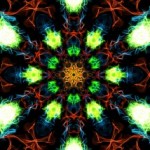- Spirituality, A Personal View – Part I
Spirituality is the creative activity wherein we transform life’s noise into life’s music.
The word “spiritual” comprises one-half of the term Spiritual Naturalist, but even among members of SNS there is no general agreement about what the word means. There isn’t, of course, one correct definition. It means many things to many people, and people approach it in many different ways. Here, I present what spirituality means to me.
Spirit
Spirituality has to do with the spirit, but what can this word mean for a Naturalist? Certainly not a concern with disembodied beings. I use the word “spirit” to describe that part of my inner being that is verbal and capable of setting and pursuing goals, of being intentional. It is essentially the same part of being that the ancient Greeks, particularly the Stoics, called the rational mind. In contrast, I use the word “soul” for the nonverbal part of my being – the imagination and dreams, emotions, impulses, intuitions and such.
Defined like this, it would follow that spirituality is primarily about living intentionally and rationally, and this certainly is a part of what I mean by spirituality. For me, however, spirituality means quite a bit more.
I found the quote at the top when I was looking through some old notebooks I used to record ideas I planned to write about. I’m not quite sure whether it was from something I read or if the quote is original, but in either case, it encapsulates what I mean by spirituality.
“The creative activity wherein we transform life’s noise into life’s music,” this sentence contains three ideas essential to how I think about spirituality – i.e. it is active, creative and transformative – plus a fourth that is central to it – the transformation of the formless and random into the structured and organized, i.e. noise into music. The essence of spirituality, for me, is bringing form to the formless, light into darkness, harmony out of the random.
The “spirit” is that part of our being that is capable of giving structure to the random elements of the mind. This morning, as I sat drinking coffee, I noted the various elements that came to mind in a span of a few minutes. These included thoughts about a television show I had watched the previous night, plans for what I would do later in the day, wondering which team would win the NBA championship, thoughts about what I might have for breakfast, curiosity about a person walking past my house, and a few others. I don’t think such randomness of mind is anything unusual.
After recognizing the randomness of my thinking, I decided to do something about it; to spend some time meditating. This decision came from my “spirit,” which also directed it. Through this meditation the state of my mind slowly transformed from randomness to a kind of quiet harmony. For me, this transformation resulted in a movement from a lower quality of being to a much higher quality – a significant improvement in my overall happiness and well being. The ability to effect such an improvement in quality is one of the great values of spirituality.
Although I value the “quiet harmony” gained from my spiritual practice, I do not consider time spent randomly as negative; it also has a place. Spirituality is holistic, it includes our whole being. Spirit and soul are intimately tied together. Soul has its role to play in that transformative process. To use a metaphor from pottery, the soul provides the clay and the spirit shapes the clay. Some forms of spirituality denigrate the “soul” elements, particularly our bodily needs and wants, as they valorize the “spiritual” element. I have no interest in such spirituality. For me, a deep spirituality is a creative integration of spirit and soul, which is equivalent to the integration of yang and yin in Taoism. (1)
The spirit does, however, occupy a kind of privileged position in the mind. The soul is closely attached to the body and its biological concerns, and as such is not particularly malleable; our experiences modify it to a degree, but it is probably the case that the nature of the soul modifies how we experience to a much larger degree. The spirit, with its potential to be rational and intentional, also arises from the biological and genetic, but its nature can be modified considerably and must be so modified to actualize its potential. To fully realize the possibilities of the spiritual life, requires considerable work and effort. Using the pottery metaphor, it takes years of practice to produce beautiful vessels. Similarly, it takes years of disciplined practice to attain a beautiful spirituality.
Before going further with this idea, I would like to go back to the idea that spirituality is about bringing form to the formless and light to the darkness and take it in a different direction.
Back to Origins
At the base of most religions is some kind of origin story. Genesis is the origin story of the Judeo-Christian religion, but virtually every one of the hundreds of religions that have been recorded by cultural anthropologists have some version of an origin story.
These origin stories have in common that they tell of the time when light emerged from darkness and form emerged from the formless. Earlier, I suggested an aspect of spirituality is “the transformation of the formless and random into the structured and organized.” Considered this way, these origin stories present the origin of the universe as a spiritual event.
There is a very old idea, common to many forms of spirituality, that the microcosm recreates the macrocosm. There are a variety of interpretations of what this idea means, but at least one element of what it means is: in our ability to give form to our mental life, our affairs, and to our arts and crafts, we reenact the genesis; we are a God in miniature, giving form to our little piece of the world.
Naturalism also presents a creation story. As it pertains to humans, it begins with the Big Bang; proceeds through the formation of galaxies, stars and planets; moves on through biological evolution; and provides a tentative account of cultural evolution, including the rise of science. In this story, the laws of nature play the role that in various religions belong to such things as God, Tao, or Rita. The laws of nature, which arise from the fundamental parameters of Nature, are why this world is not merely random. Instead it is rich in form and organization; our bodies and minds being a part of that richness. Nature is creational, and we are one of the multitude of things it creates; and when we create, our creation is a part of, and a continuation of, Nature’s creational activity. (2)
For me, to properly appreciate the Naturalistic creation story as a spiritual, rather than secular, story, two things are required. One, that we bring the story inside ourselves; that we start from the fact that we are a part of the creation, not something extraneous to it. So it is the story of where we ultimately come from. Scientific method requires objectivity, but making the scientific story meaningful and spiritual requires that we reinject our subjectivity into it, for our subjectivity is also part of the world. (By subjectivity, here, I mean our awareness and feeling, not our opinions and prejudices.)
Secondly, we need to recognize that while the scientific story brings light to many things formerly in darkness, the question of ultimate origins remains obscure. We understand a lot about how the laws of nature operate, but why such an improbable set of laws exists in the first place is beyond us. Contemplation of that mystery, seeing life under its aspect, is an important part of my spiritual practice. (3)
Such a contemplation brings us face to face with two great mysteries – the mystery of the universe and the mystery of being. The revelation that these two mysteries are one and the same, the experience wherein the subject and the object in that contemplation are one and the same, is a kind of absolute experience. This experience, however, is an extreme of spirituality, which I plan to discuss in Part II of this article.
The philosopher Immanuel Kant wrote “Two things fill the mind with ever new and increasing admiration and awe…the starry heavens above me and the moral law within me.” In this section, my point has simply been that there is a continuity that connects our inner self and its ability to be moral and “the starry heavens”; we are a small process firmly and completely embedded in the Great Creational Process of the Universe. To focus solely on the concerns and desires of this small being is to ever remain small; to focus at least some of our concern on the Great Otherness in which we are embedded, is to gain some of the limitlessness of that Otherness. Spirituality entails this second kind of focus, and as such it enlarges us. (4 and 5)
(In Part II of this article, I will explore other aspects of spirituality.)
** ** ** ** **
Notes 1-6: This article is a summation of ideas I have presented in a variety of articles posted here during the past seven years. Below are some key articles that expand upon the ideas presented.
- The Marriage of Spirit and Soul, published Sept. 24, 2015
- Creational Nature, published Oct. 1, 2020
- 1-1 = The Great Mystery, published Feb. 6, 2020
- The Naturalistic Equivalent of God, published Nov. 5, 2020
- Defined by Something Larger, published Sept. 3, 2020
Subscribe to The Spiritual Naturalist Society
Learn about Membership in the Spiritual Naturalist Society
__________
The Spiritual Naturalist Society works to spread awareness of spiritual naturalism as a way of life, develop its thought and practice, and help bring together like-minded practitioners in fellowship.













